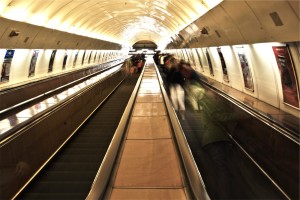 “You need to remove your computer and liquids from your suitcase.” I stopped short at the X-ray machine in airport security. Wait a minute. I’d just come down the TSA Pre lane. I could keep this stuff in my bag. Positive it was a mistake, I told the TSA agent, “Oh, I have TSA Pre.”
“You need to remove your computer and liquids from your suitcase.” I stopped short at the X-ray machine in airport security. Wait a minute. I’d just come down the TSA Pre lane. I could keep this stuff in my bag. Positive it was a mistake, I told the TSA agent, “Oh, I have TSA Pre.”
The woman’s look made it clear she thought I was an idiot. “This isn’t a TSA Pre line,” she said. Before you think I’m an idiot, too, let’s back up 10 minutes.
For those of you that don’t know, TSA Pre is an airport security program you can opt-in to that simplifies the traveling process. You complete a background check, provide your fingerprints, and pay a fee. Then, for five years, you get to go through airport security like “normal.” Shoes stay on. Computers and liquids stay in your bag. Metal detectors are used instead of those oh-so-accurate body scanners. Biggest plus of all — the lines tend to be much shorter.
Anyway, 10 minutes earlier, I’d entered the clearly marked TSA Pre line. The agent reviewed my ID and boarding pass before clearing me. As I passed through, he mentioned I should keep out my ID and boarding pass so, “I could walk through with my shoes on.” The lines were merging at this point, so I thought, “No problem. This airport just has a second checkpoint.”
Fast-forward 10 minutes to the irritated TSA agent who couldn’t believe I was so dumb as to leave my computer and liquids in my bag. I finally got through security, but I couldn’t stop thinking about the unnecessary confusion (I wasn’t the only one making the same mistake).
The very first agent at the front of security could have solved all the confusion with one short statement: There is no TSA Pre offered at this checkpoint. That’s it. One statement would have resolved a bunch of chaos.
But for whatever reason, it didn’t seem to occur to this agent that travelers were experiencing a big contradiction. They’d entered a TSA Pre line, and it was only as they went to send their bags through the X-ray machine they learned that the expected rules didn’t apply.
The TSA is easy to pick on because no one likes dealing with airport security, but I see other organizations doing something similar every day. They inadvertently create unnecessary aggravation that leads to employee, client, and customer frustration.
For instance, remember when Yahoo’s CEO Marissa Mayer issued a blanket request for all telecommuters to come into the office? While I doubt a detailed explanation would have smoothed all ruffled feathers, the lack of any explanation helped matters not at all.
And that point, perhaps more than anything else, matters most. These seemingly small aggravations are almost entirely avoidable – yet if you add up enough of them, they can create cracks in the most solid of foundations. Whether you run a small business or a global behemoth, you need to search out those aggravations and resolve them to the best of your ability.
In many instances, it’s a simple matter of clearly communicating. In other situations, it may require something bigger, like a company-wide policy change. Whatever the solution, you can’t afford to be known as an organization that encourages aggravation. Employees, clients, and customers won’t stand for it.
And unlike the TSA, it’s unlikely you have a monopoly in your industry. People can (and will) go elsewhere.

